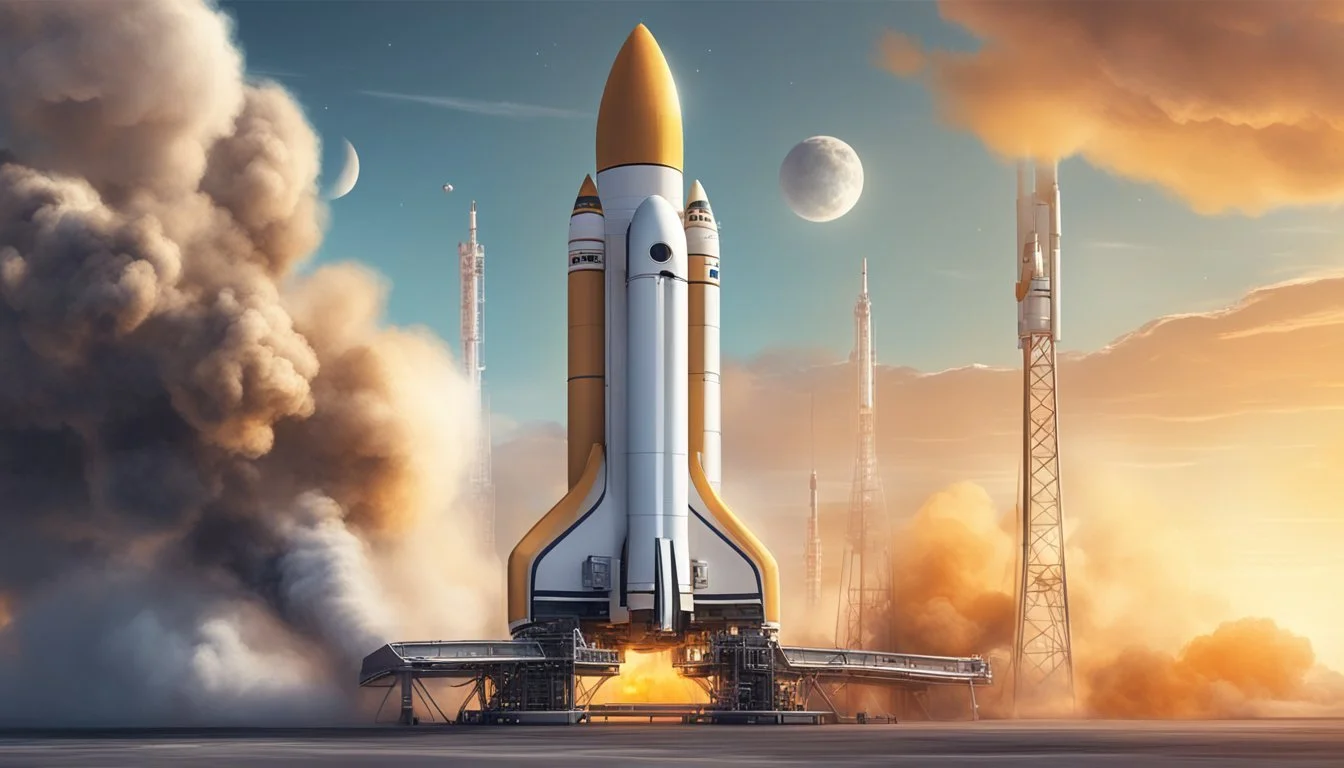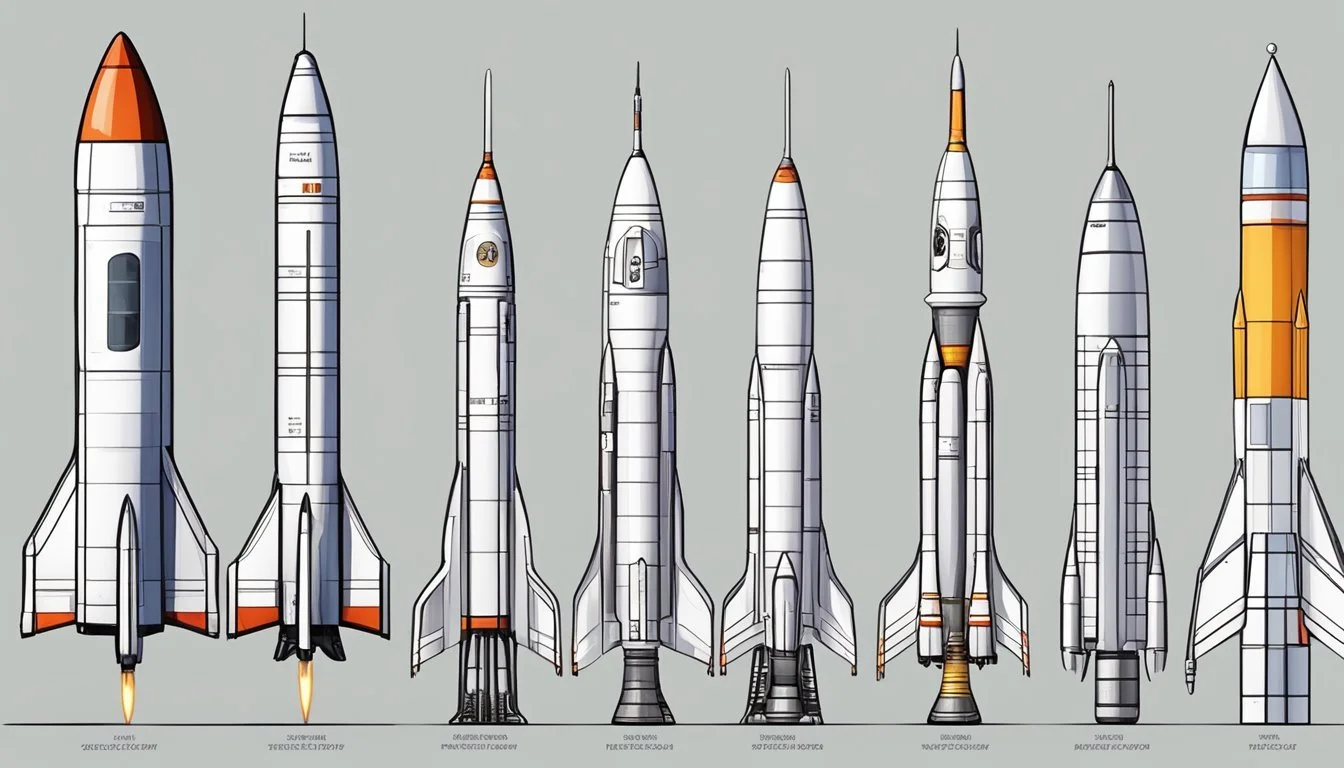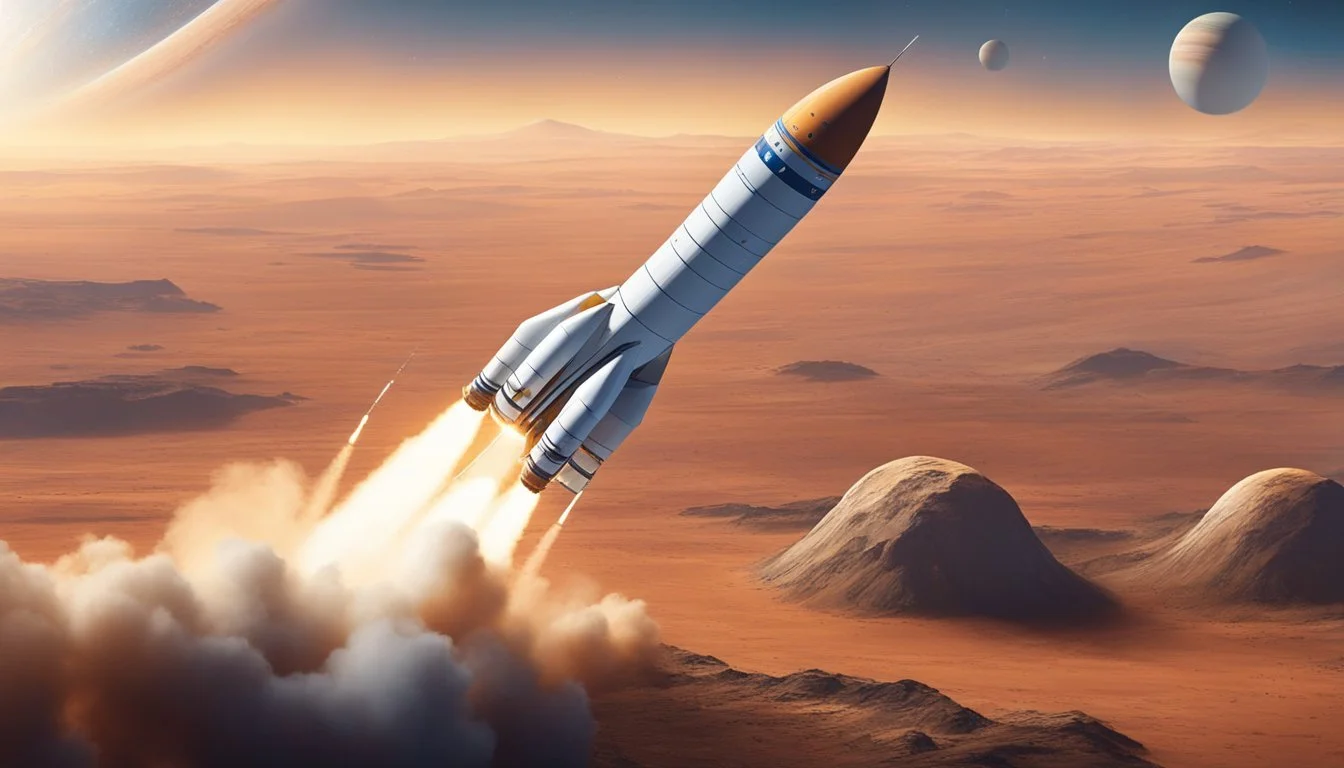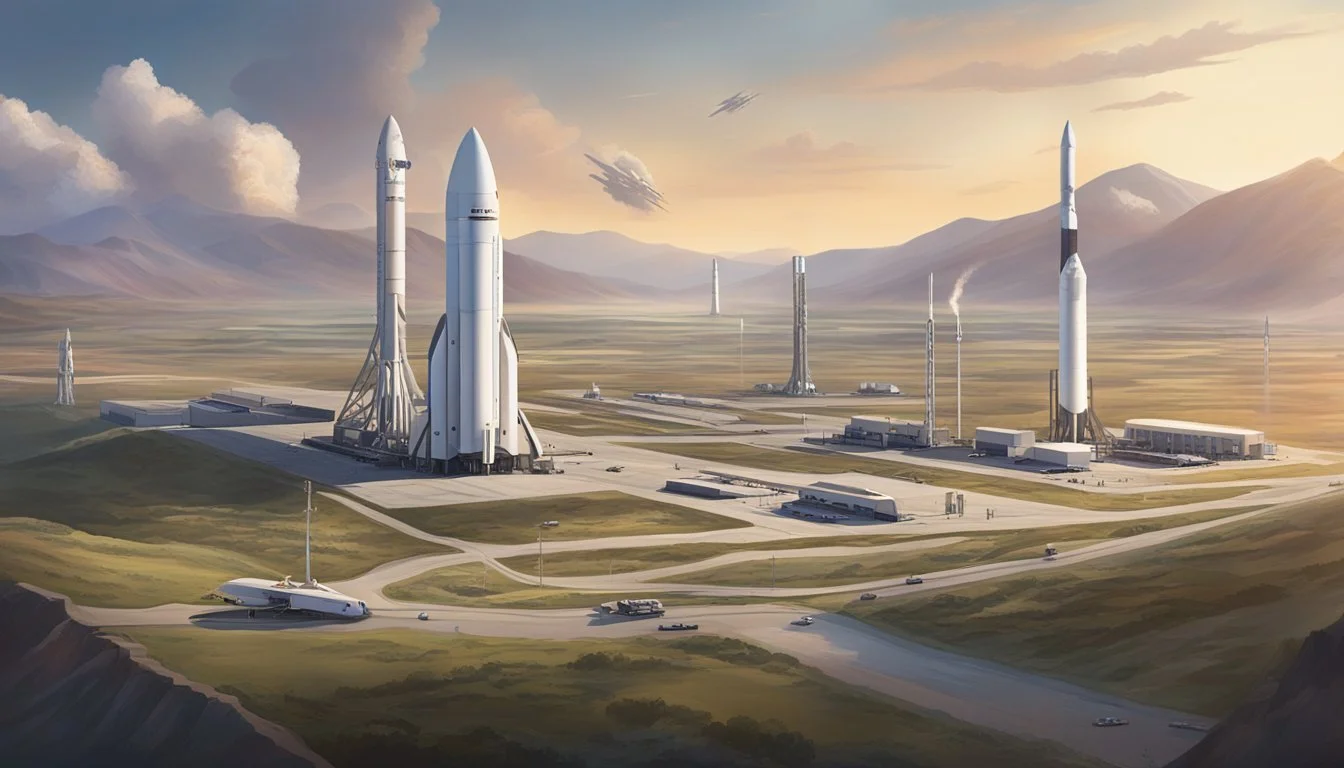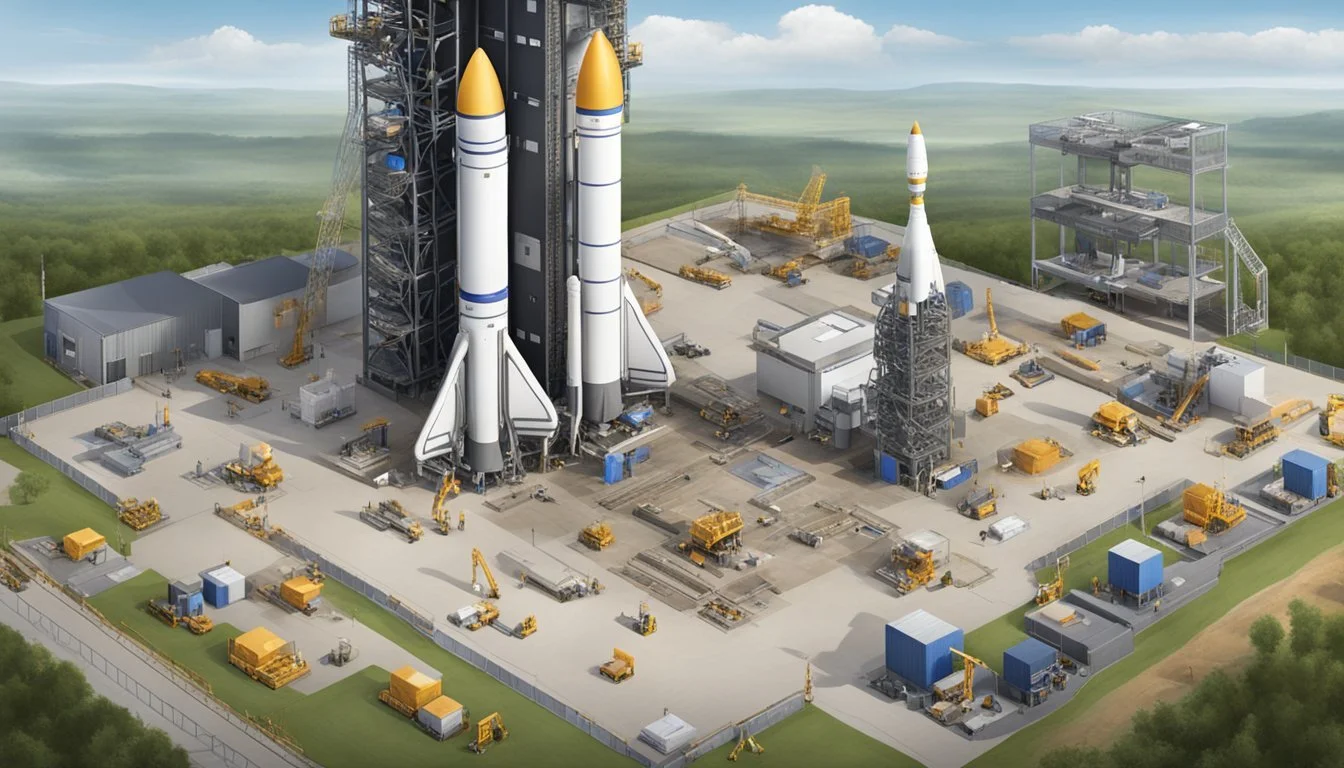From Falcon to Starship: Elon Musk's Rocket Evolution in 'Mars: Inside SpaceX'
A Decade of Interplanetary Ambition
SpaceX's journey from the Falcon 1 to the ambitious Starship represents a remarkable evolution in rocket technology. Founded by Elon Musk in 2002, the company has consistently pushed the boundaries of space exploration and rocket design. The Falcon 1, SpaceX's first orbital rocket, proved that private companies could successfully develop and launch spacecraft.
Building on this success, SpaceX introduced the Falcon 9, which revolutionized the industry with its reusable first-stage boosters. The Falcon 9 has become a cornerstone of SpaceX's operations, enabling cost-effective satellite launches and cargo missions to the International Space Station. This innovative approach to rocket design and reusability set the stage for even more ambitious projects.
The Starship, SpaceX's latest development, represents the culmination of years of research and engineering. Designed as a fully reusable super heavy-lift launch vehicle, Starship aims to dramatically reduce launch costs and enable interplanetary travel. With its first integrated flight test in April 2023, Starship became the most massive and powerful rocket ever flown, marking a significant milestone in SpaceX's quest to make life multi-planetary.
The Era of SpaceX and Its Mars Ambitions
SpaceX has revolutionized space travel with its innovative rockets and ambitious plans for Mars colonization. The company's journey from its early Falcon rockets to the cutting-edge Starship system showcases its rapid technological advancement and unwavering focus on interplanetary exploration.
Origins and Evolution of SpaceX Rockets
SpaceX's rocket development began with the Falcon 1, the first privately developed liquid-fuel rocket to reach orbit. This success paved the way for the Falcon 9, a reusable rocket that dramatically reduced launch costs.
The Falcon 9 has become a workhorse for satellite deployments and ISS resupply missions. Its ability to land and be reused multiple times marked a significant milestone in spaceflight economics.
SpaceX then introduced the Falcon Heavy, capable of lifting heavier payloads to orbit. This powerful rocket demonstrated the company's growing capabilities and set the stage for even more ambitious projects.
SpaceX's Vision for Mars Colonization
Elon Musk's vision for Mars colonization centers around the Starship spacecraft and Super Heavy rocket. This fully reusable system is designed to transport both crew and cargo to Mars.
Starship, the world's most powerful launch vehicle, can carry up to 150 metric tonnes to orbit. SpaceX plans to begin uncrewed Mars missions with Starship in 2026, followed by crewed flights two years later.
The company's long-term goal is to establish a self-sustaining city on Mars. This ambitious plan involves developing technologies for in-situ resource utilization and creating habitats suitable for long-term human presence on the Red Planet.
SpaceX's Interplanetary Transport System concept aims to make Mars travel more accessible and affordable, potentially enabling large-scale colonization efforts in the future.
Breaking Down the Falcon Series
SpaceX's Falcon series revolutionized spaceflight with increasingly capable and cost-effective launch vehicles. These rockets paved the way for reusability and expanded payload capacities.
Overview of Falcon 1 and Falcon 9
Falcon 1 marked SpaceX's entry into orbital rocketry. Launched in 2008, it became the first privately developed liquid-fuel rocket to reach orbit. The single-engine design proved the viability of SpaceX's approach.
Falcon 9 built on this success. Introduced in 2010, it featured nine Merlin engines in its first stage. This larger rocket could deliver payloads to low Earth orbit and beyond. Falcon 9 quickly became SpaceX's workhorse for satellite launches and cargo missions to the International Space Station.
Key improvements to Falcon 9 included:
Increased thrust and efficiency
Upgraded avionics and structures
Enhanced reliability through flight experience
Achieving Reusability
SpaceX's pursuit of reusability transformed the economics of spaceflight. The company developed a method to land and recover the Falcon 9's first stage.
This process involved:
Controlled descent using grid fins
Engine reignition for precision landing
Touchdown on land or drone ships at sea
Reusing boosters dramatically reduced launch costs. SpaceX refined this capability, achieving rapid turnaround times between flights. The fastest reflight of a booster occurred just 27 days after its previous mission.
Falcon Heavy: Increasing Payload Capacity
Falcon Heavy expanded SpaceX's capabilities for heavy-lift missions. Launched in 2018, it combined three Falcon 9 first stages to create a powerful launch vehicle.
Falcon Heavy specifications:
Thrust: Over 5 million pounds
Payload to low Earth orbit: Up to 63,800 kg
Payload to Mars: Up to 16,800 kg
This rocket enabled SpaceX to pursue more ambitious missions, including lunar and Mars exploration. Falcon Heavy demonstrated its power by launching a Tesla Roadster into space during its maiden flight.
The ability to recover and reuse all three first-stage boosters further enhanced Falcon Heavy's cost-effectiveness for large payload missions.
Starship: The Next Giant Leap
SpaceX's Starship represents a revolutionary leap in spacecraft design and capabilities. This ambitious project aims to make interplanetary travel feasible and dramatically reduce launch costs.
From BFR to Starship
Starship evolved from earlier concepts like the Mars Colonial Transporter and the Big Falcon Rocket (BFR). SpaceX refined these ideas into the current Starship design.
The name change from BFR to Starship occurred in 2018. This shift reflected the spacecraft's expanded mission profile beyond just Mars colonization.
Starship is designed for both Earth orbit missions and deep space exploration. Its versatility allows for satellite deployment, lunar landings, and Mars missions.
Design and Specifications of Starship
Starship stands at 50 meters tall with a 9-meter diameter. It's constructed primarily of stainless steel, chosen for its strength and heat resistance.
The spacecraft uses SpaceX's Raptor engines, which run on liquid methane and liquid oxygen. This propellant choice enables in-situ resource utilization on Mars.
Starship can carry over 100 metric tons to low Earth orbit. Its payload capacity surpasses that of any current operational rocket.
The vehicle features a unique heat shield design. This allows for controlled reentry from orbit or planetary missions.
Super Heavy Booster: Enhancing Lift Capacity
The Super Heavy booster forms the first stage of the full Starship system. It stands 70 meters tall and uses up to 33 Raptor engines.
Super Heavy provides the immense thrust needed to lift Starship out of Earth's atmosphere. After separation, it returns to Earth for reuse.
The booster's reusability is key to SpaceX's goal of reducing launch costs. It's designed to land precisely on its launch mount for rapid turnaround.
Super Heavy's power makes it the most powerful rocket stage ever built. This capability is crucial for Starship's ambitious mission profiles.
Starship's Test Flight Chronology
SpaceX began Starship prototype testing in 2019 with short "hop" flights. These early tests validated the basic design and Raptor engine performance.
Subsequent prototypes attempted higher altitude flights. SN8 conducted the first high-altitude test in December 2020, reaching 12.5 km.
In April 2023, SpaceX attempted the first full-stack Starship launch. While the flight ended prematurely, it provided valuable data for future attempts.
Each test flight has advanced Starship's development. SpaceX iterates rapidly, incorporating lessons learned into subsequent prototypes and launch attempts.
Propulsion and Technology
SpaceX's journey from Falcon to Starship has been marked by significant advancements in propulsion systems and materials technology. These innovations have enabled the company to push the boundaries of space exploration.
Advancements in Raptor Engines
The Raptor engine represents a leap forward in rocket propulsion technology. Unlike the Merlin engines used in Falcon rockets, Raptors use methane as fuel, providing higher efficiency and thrust. SpaceX has continuously improved the Raptor design, increasing its power output and reliability.
Raptor engines generate over 230 tons of thrust at sea level. This impressive power allows Starship to lift massive payloads into orbit. The engine's full-flow staged combustion cycle maximizes efficiency, a crucial factor for long-duration space missions.
SpaceX aims to mass-produce Raptor engines, reducing costs and enabling frequent launches. This production strategy aligns with the company's goal of making space travel more accessible and economical.
Innovative Use of Stainless Steel
Starship's stainless steel construction marks a departure from traditional aerospace materials. This choice offers several advantages over carbon composites used in earlier designs.
Stainless steel performs better at cryogenic temperatures, crucial for storing supercold propellants. It also maintains strength at high temperatures during reentry, reducing the need for extensive heat shielding.
The material is relatively inexpensive and widely available, lowering production costs. Its ability to withstand extreme conditions makes it ideal for Mars missions, where resources for repairs will be limited.
Steel's reflective properties help manage heat during reentry. This characteristic, combined with Starship's unique "belly-flop" maneuver, contributes to its reusability.
Heat Shield Tiles and Reentry Technology
Starship's reentry system incorporates innovative heat shield tiles. These hexagonal tiles protect the vehicle from extreme temperatures during atmospheric reentry.
The tiles are made of a durable, lightweight material capable of withstanding temperatures up to 1400°C. They cover Starship's windward side, the area exposed to the most heat during descent.
SpaceX has developed a unique attachment method for these tiles, allowing for easy replacement and maintenance. This design supports rapid turnaround times between flights, a key factor in reducing launch costs.
The heat shield works in conjunction with Starship's aerodynamic design. The vehicle's ability to control its orientation during reentry distributes heat more evenly, enhancing the effectiveness of the thermal protection system.
Pathway to Mars
SpaceX's ambitious plan to reach Mars involves developing innovative technologies and setting ambitious timelines. The company aims to leverage its Starship spacecraft and Super Heavy booster to transport humans to the Red Planet.
Developing Human Landing Systems
SpaceX is designing Starship as a versatile vehicle capable of landing humans on Mars. The spacecraft features a spacious interior to accommodate crew and cargo for long-duration missions. Starship's heat shield and innovative landing system allow for controlled descents on the Martian surface.
NASA selected SpaceX's Starship as the Human Landing System for the Artemis program, demonstrating its potential for planetary exploration. This decision provides valuable experience and funding for SpaceX to refine its Mars landing capabilities.
Orbital Refueling and Interplanetary Journeys
A key component of SpaceX's Mars mission strategy is orbital refueling. This technique involves launching multiple Starships to Low Earth Orbit (LEO) and transferring propellant between vehicles.
Orbital refueling allows Starship to depart Earth with a full fuel load, significantly increasing its payload capacity for interplanetary journeys. SpaceX plans to establish a network of fuel depots in Earth orbit to support frequent Mars missions.
The company is developing automated docking and fuel transfer systems to enable efficient refueling operations in space.
Timeline and Milestones for Mars Missions
SpaceX has set ambitious goals for its Mars missions. The company aims to launch uncrewed cargo missions to Mars by 2026, establishing initial infrastructure and resources on the planet's surface.
Following successful cargo deliveries, SpaceX plans to launch the first crewed missions to Mars in the late 2020s or early 2030s. These initial human missions will focus on establishing a permanent base and conducting scientific research.
SpaceX continues to refine its timeline based on technological progress and mission success. The company's iterative approach allows for rapid development and testing of key systems required for Mars exploration.
Starship and The Future of Space Exploration
SpaceX's Starship system represents a major leap forward in space exploration capabilities. This fully reusable spacecraft has the potential to revolutionize missions to the Moon, Mars, and beyond.
Contributions to NASA's Artemis and Beyond
Starship has been selected as the Human Landing System for NASA's Artemis program. It will transport astronauts from lunar orbit to the Moon's surface, supporting the goal of establishing a sustainable human presence on Earth's celestial neighbor.
The spacecraft's large payload capacity enables it to deliver substantial amounts of cargo and equipment for lunar bases and research stations. This capability is crucial for long-term exploration and potential resource utilization on the Moon.
Starship's design also makes it well-suited for future Mars missions. SpaceX aims to send multiple uncrewed Starships to Mars in 2026, with crewed missions potentially following in the early 2030s.
Implications for Space Tourism and Industry
Starship's reusability and large passenger capacity could significantly reduce the cost of space travel. This may open up new opportunities for space tourism, allowing more people to experience spaceflight and views of Earth from orbit.
The spacecraft's ability to launch and land large payloads could also transform the satellite industry. It may enable the deployment of larger, more capable satellites and space-based manufacturing facilities.
Starship's in-space refueling capability could support the development of fuel depots in Earth orbit. This infrastructure could serve as a stepping stone for missions to more distant destinations in the solar system.
Starship's Role in Global Connectivity and Research
Starship's large payload capacity makes it ideal for deploying and servicing satellite constellations like SpaceX's Starlink. This could help bring high-speed internet access to underserved areas around the globe.
The spacecraft's ability to launch large space telescopes and other scientific instruments may accelerate space-based research. This could lead to new discoveries in astronomy, Earth observation, and other fields.
Starship's potential to transport large crews and cargo to orbit may also enable the construction and operation of larger, more capable space stations. These facilities could serve as platforms for scientific research, technology development, and commercial activities in low Earth orbit.
Regulatory Hurdles and Environmental Considerations
SpaceX faces significant regulatory and environmental challenges in its quest to develop and launch Starship. The company must navigate complex federal regulations while addressing concerns about the potential ecological impact of its operations in sensitive areas.
FAA Regulatory Compliance and Launch Licenses
The Federal Aviation Administration (FAA) plays a crucial role in overseeing SpaceX's launch activities. SpaceX must obtain launch licenses for each Starship flight, a process that involves rigorous safety and environmental reviews.
The FAA requires SpaceX to implement over 75 actions to mitigate environmental impacts at its Boca Chica, Texas launch site. These measures aim to protect local ecosystems and wildlife while allowing SpaceX to proceed with its ambitious plans.
Regulatory hurdles have caused delays in Starship's development timeline. SpaceX has had to push back launch dates due to ongoing environmental assessments and compliance requirements.
Addressing Environmental Impact Concerns
SpaceX's Starship program has raised significant environmental concerns, particularly regarding its impact on the Boca Chica area and the Gulf of Mexico. The massive size of Starship and its Super Heavy booster has led to increased scrutiny of their potential ecological effects.
Key environmental considerations include:
CO2 emissions from launches
Noise pollution affecting local wildlife
Debris scattering during launch and landing attempts
Potential damage to sensitive habitats
SpaceX is working to develop reusable launch systems to reduce environmental impact over time. The company aims to balance its Mars exploration goals with responsible environmental stewardship.
Environmentalists and regulators continue to closely monitor SpaceX's activities, pushing for stronger protections and mitigation strategies as the Starship program progresses.
Starship's Launch Sites and Infrastructure
SpaceX has developed specialized facilities to support Starship's ambitious mission. These sites are crucial for manufacturing, testing, and launching the next-generation spacecraft.
Boca Chica: Starship's Birthplace
Boca Chica, Texas serves as the primary development and testing site for Starship. SpaceX renamed this facility "Starbase" to reflect its significance. The location offers easy access to the Gulf of Mexico for sea-based landing attempts.
Starbase houses production facilities where Starship and Super Heavy components are manufactured. The site includes assembly buildings, test stands, and launch mounts.
SpaceX has rapidly expanded Starbase's infrastructure since 2019. The company built integration towers, fuel storage tanks, and other support structures to enable full-scale testing.
Development of Launchpads and Ground Facilities
SpaceX has constructed robust launchpads to handle Starship's massive size and power. The main orbital launch mount at Starbase can withstand the thrust of 33 Raptor engines.
The company installed a 469-foot-tall integration tower nicknamed "Mechazilla". This structure uses robotic arms to stack Starship atop Super Heavy and catch returning vehicles.
SpaceX built propellant production plants at Starbase to generate the large quantities of liquid methane and oxygen needed for launches. The site also features cryogenic storage tanks and fueling systems.
Launch control centers and tracking facilities ensure safe flight operations. SpaceX continues to upgrade these systems based on test flight data.
Collaborations and Competitions in the Space Industry
SpaceX's journey to revolutionize space travel involves strategic partnerships and fierce rivalries. The company navigates a complex landscape of collaborations with government agencies and competition from other private space firms.
Partnerships with NASA and Other Agencies
SpaceX has forged crucial partnerships with NASA, significantly advancing space exploration efforts. The company's Commercial Crew and Commercial Resupply Services contracts have enabled regular cargo and crew missions to the International Space Station.
These collaborations have proven mutually beneficial. NASA gains cost-effective access to space, while SpaceX receives funding and expertise to develop its technologies.
SpaceX also works with other space agencies worldwide, expanding its global reach. These partnerships have facilitated launches for various countries and organizations, demonstrating the company's reliability on the international stage.
Rivalries: Blue Origin, Dynetics, and Others
The private space industry has become increasingly competitive, with SpaceX facing challengers like Blue Origin and Dynetics. Blue Origin, founded by Jeff Bezos, is a primary rival in developing reusable rockets and pursuing lunar missions.
SpaceX and Blue Origin have engaged in high-profile competitions for NASA contracts, including the Human Landing System for the Artemis program. This rivalry has spurred innovation and pushed both companies to refine their technologies.
Dynetics, another competitor, has also vied for NASA contracts. The competition among these firms has accelerated progress in space technology, benefiting the industry as a whole.

